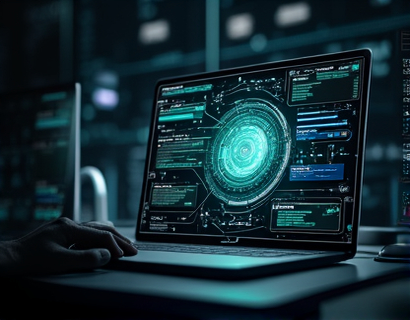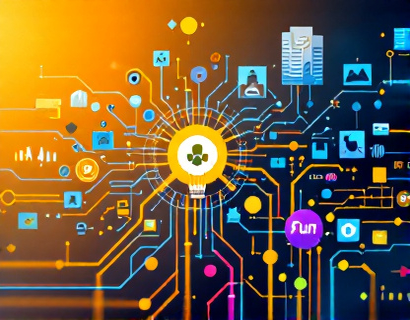Blockchain-Driven Notarization: Transforming Document Security and Accessibility
The traditional notarization process, while crucial for ensuring the authenticity and legality of documents, has long been marred by inefficiencies, lack of transparency, and vulnerability to tampering. The advent of blockchain technology offers a revolutionary solution, redefining document security and accessibility. This article delves into the transformative impact of blockchain-driven notarization, exploring how this cutting-edge technology is reshaping the way we handle document authentication and management.
Understanding Blockchain Technology
Before diving into the specifics of blockchain-driven notarization, it's essential to grasp the fundamental concepts of blockchain technology. At its core, a blockchain is a decentralized digital ledger that records transactions across multiple computers in such a way that the registered transactions cannot be altered retroactively. This technology ensures transparency, security, and immutability, making it an ideal foundation for notarization services.
Blockchain operates on a network of nodes, each maintaining a copy of the entire ledger. Every transaction, or block, is verified by these nodes through complex cryptographic algorithms. Once verified, the block is added to the chain, creating a permanent and unalterable record. This decentralized and distributed nature of blockchain eliminates the need for a central authority, reducing the risk of single points of failure and enhancing security.
Traditional Notarization: Challenges and Limitations
Traditionally, notarization involves a public official, such as a notary public, attesting to the identity of the signatories and the authenticity of their signatures on a document. While this process serves to prevent fraud and ensure legal validity, it comes with several challenges:
- Inefficiency: The process often involves physical presence, lengthy wait times, and paper-based documentation, leading to delays and increased costs.
- Limited Accessibility: Notarization services are typically available during business hours and in specific locations, restricting access for remote or busy individuals.
- Security Risks: Physical documents can be lost, stolen, or tampered with, compromising their integrity and authenticity.
- Lack of Transparency: The traditional notarization process lacks a transparent and verifiable record of the authentication process, making it difficult to prove the document's legitimacy.
Blockchain-Driven Notarization: A Solution to Traditional Challenges
Blockchain-driven notarization addresses these challenges by leveraging the inherent properties of blockchain technology. Here's how this innovative approach transforms the notarization process:
Enhanced Security
The immutable nature of blockchain ensures that once a document is notarized and recorded on the blockchain, it cannot be altered or deleted. Each notarization transaction is cryptographically secured, creating a tamper-evident record. This level of security significantly reduces the risk of document tampering and fraud, providing a higher degree of trust and reliability.
Increased Efficiency
Blockchain-driven notarization eliminates the need for physical documents and manual verification processes. Notaries can authenticate documents remotely, in real-time, and with minimal administrative overhead. This streamlined process reduces wait times and costs, making notarization more accessible and convenient for users.
Improved Accessibility
With blockchain-driven notarization, documents can be accessed and verified from anywhere in the world, at any time. This global accessibility is particularly beneficial for international businesses and individuals who frequently deal with cross-border transactions. The digital nature of the process also makes it easier to integrate with existing digital workflows and systems.
Transparency and Traceability
Every step of the notarization process on a blockchain is recorded and visible to all participants. This transparency ensures that all parties can verify the authenticity and integrity of the document at any point in time. The immutable ledger provides a clear and auditable trail, enhancing trust and accountability.
How Blockchain-Driven Notarization Works
To understand the practical implementation of blockchain-driven notarization, let's break down the process into key steps:
1. Document Preparation
The process begins with the preparation of the document to be notarized. This involves ensuring the document is in a digital format and that all necessary information is accurately filled out. The document is then encrypted to protect its content and ensure privacy.
2. Notary Verification
The notary, who can be any authorized individual with access to the blockchain platform, reviews the document for authenticity and completeness. This step may include verifying the identity of the signatories through digital means, such as biometric data or digital certificates.
3. Block Creation and Verification
Once the notary confirms the document's validity, a new block is created on the blockchain. This block contains the document, the notary's signature (also digitally signed), and a timestamp. The block is then broadcast to the network of nodes for verification.
4. Consensus and Addition to Blockchain
The nodes in the network verify the block using consensus algorithms, ensuring that all copies of the ledger agree on the new transaction. Once consensus is reached, the block is added to the blockchain, creating an immutable record of the notarization.
5. Document Distribution
The notarized document, now part of the blockchain, can be distributed to all relevant parties. Each recipient receives a unique cryptographic key to access and verify the document. This ensures that only authorized individuals can view or use the document.
Benefits for Legal Professionals and Businesses
The adoption of blockchain-driven notarization offers numerous benefits for legal professionals and businesses:
1. Cost Reduction
By eliminating the need for physical documents and reducing administrative overhead, blockchain-driven notarization can significantly lower costs associated with traditional notarization processes.
2. Time Efficiency
The streamlined and automated nature of the process accelerates notarization, allowing for faster turnaround times and improved productivity.
3. Enhanced Security
The cryptographic security and immutability of blockchain provide a robust defense against document tampering and fraud, protecting sensitive information and ensuring legal compliance.
4. Global Reach
Blockchain-driven notarization removes geographical barriers, enabling businesses to operate seamlessly across borders without the need for local notarization services.
5. Increased Trust
The transparency and traceability of blockchain enhance trust among all parties involved, as the authenticity and integrity of documents can be easily verified.
Case Studies and Real-World Applications
Several industries have already begun to adopt blockchain-driven notarization, reaping the benefits of this innovative technology:
Real Estate
In the real estate sector, blockchain-driven notarization simplifies property transactions by securely recording ownership transfers, reducing the risk of fraud and streamlining the closing process.
Supply Chain Management
Companies can use blockchain to notarize and track documents related to supply chain operations, ensuring the authenticity of certificates of origin, compliance documents, and other critical paperwork.
Intellectual Property
Creators and businesses can leverage blockchain-driven notarization to secure and verify ownership of intellectual property rights, providing a tamper-proof record of creation and ownership.
Future Prospects and Challenges
While the potential of blockchain-driven notarization is vast, there are several challenges that need to be addressed for widespread adoption:
Regulatory Framework
The legal and regulatory landscape for blockchain technology is still evolving. Clear and consistent regulations are necessary to ensure compliance and foster trust in blockchain-driven notarization services.
User Adoption
Educating users about the benefits and functionality of blockchain-driven notarization is crucial for driving adoption. User-friendly interfaces and comprehensive support can help overcome initial resistance.
Interoperability
Ensuring that different blockchain platforms and systems can interoperate is essential for a seamless and universal notarization experience. Standardization efforts can play a key role in achieving this goal.
Conclusion
Blockchain-driven notarization represents a significant leap forward in document security and accessibility. By harnessing the power of blockchain technology, this innovative approach addresses the inefficiencies and vulnerabilities of traditional notarization, offering a more secure, efficient, and transparent solution. As the technology continues to mature and gain acceptance, it is poised to transform not only the notarization industry but also various sectors that rely on secure document management. Embracing blockchain-driven notarization is not just a step into the future; it's a necessity for those seeking to enhance their document security and accessibility in the digital age.










































